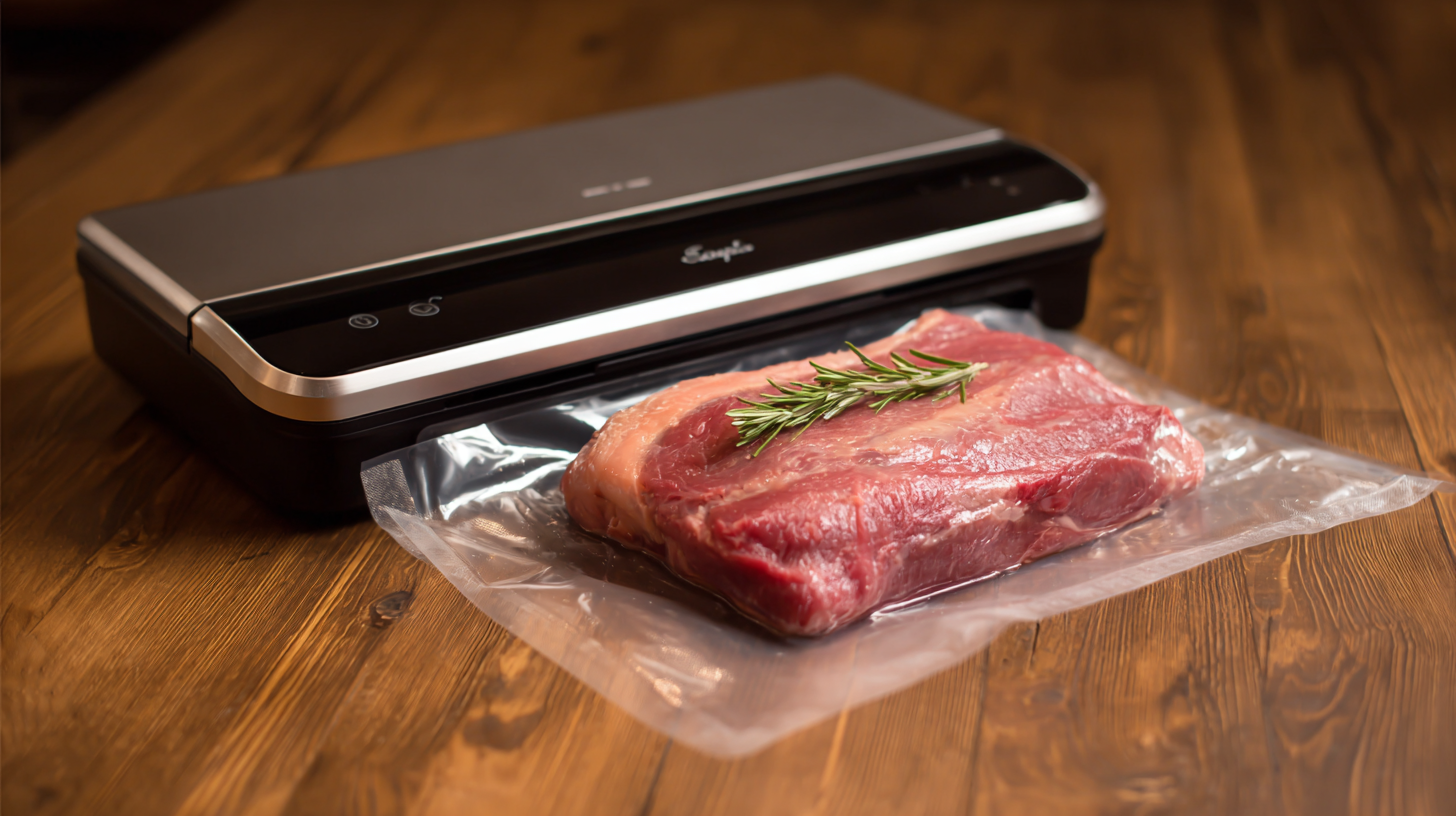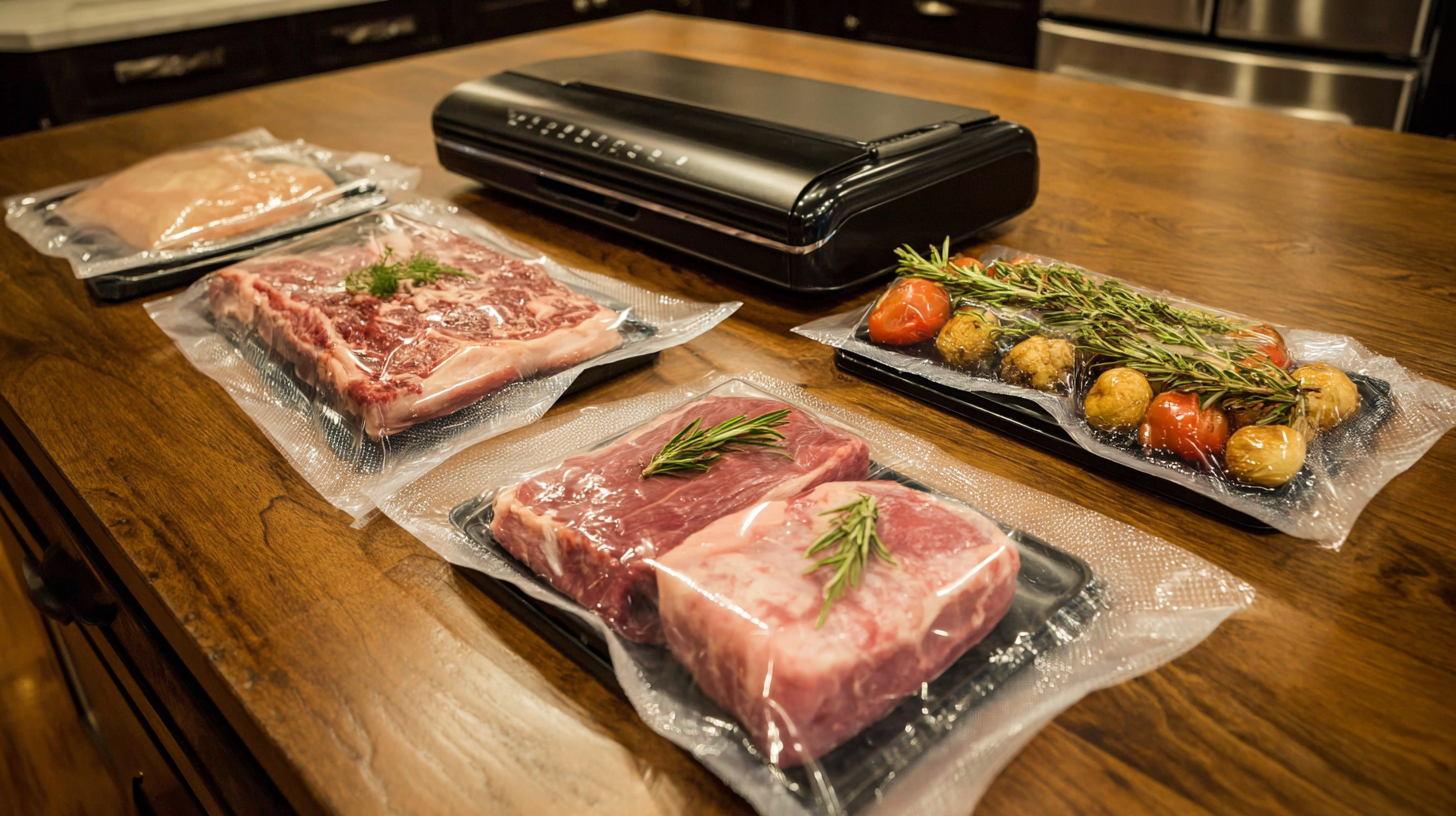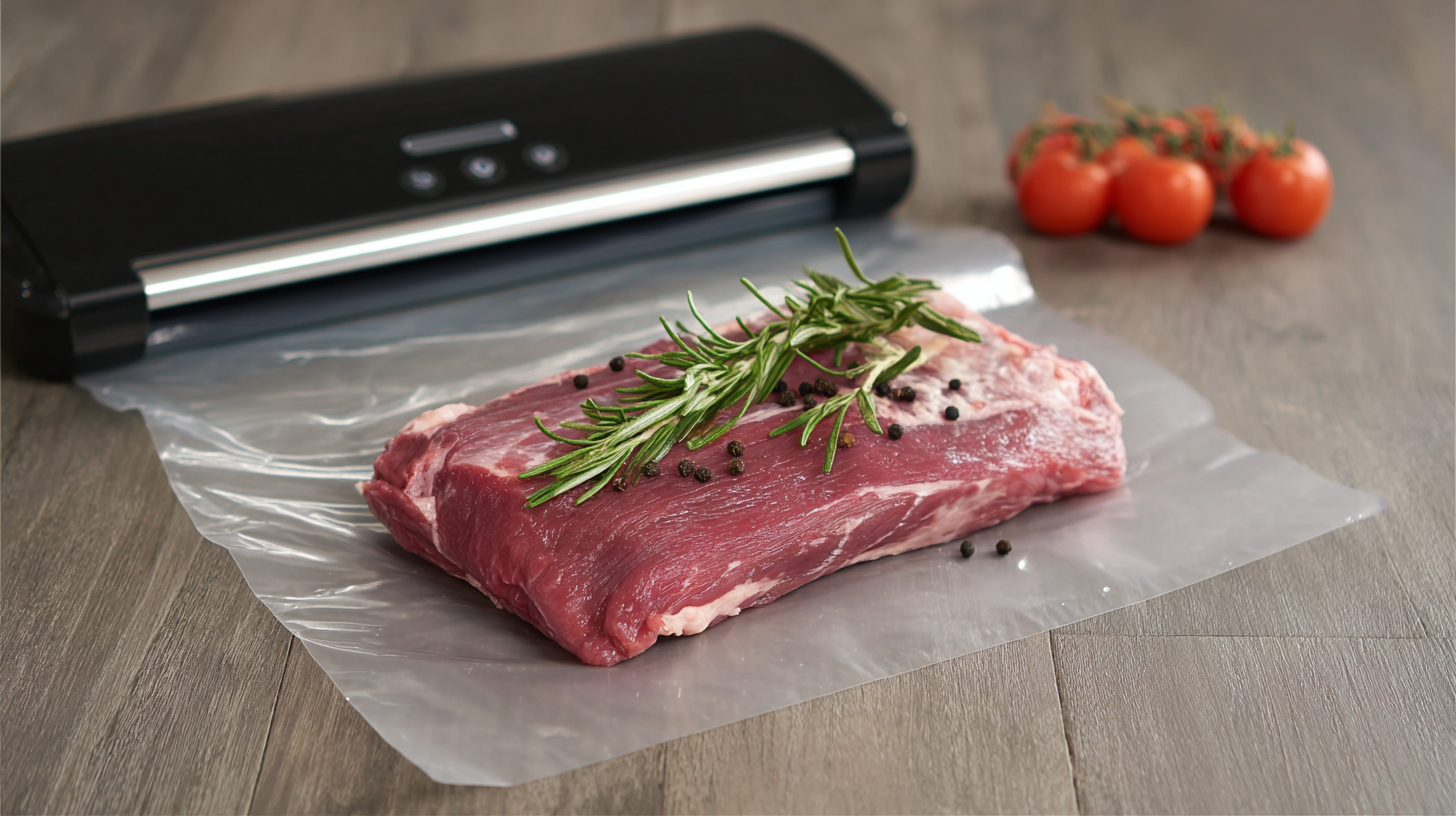About Us | Blog | FAQs | Tips/Troubleshoot | Contact Us | Machine Manuals | Demo Videos
Ultimate Guide to Using the Best Meat Vacuum Sealer for Perfect Preservation
In today's fast-paced world, preserving the freshness and flavor of meat has never been more important. According to a report by the Food and Drug Administration (FDA), approximately 30-40% of the food supply in the United States is wasted, much of which is due to improper storage and spoilage. This is where a meat vacuum sealer becomes an invaluable tool in every kitchen. By effectively removing air from packaging, a vacuum sealer can extend the shelf life of meat by 3 to 5 times compared to traditional storage methods, as reported by the National Center for Home Food Preservation. This means not only reduced waste but also significant savings on grocery bills. Additionally, vacuum sealing helps in preserving the texture, flavor, and nutritional value of meat, making it an essential technique for both chefs and home cooks alike. Embracing the benefits of a meat vacuum sealer ensures perfectly preserved meat ready for any culinary adventure.

Table of Contents
[Hide]
Understanding the Benefits of Meat Vacuum Sealers for Food Preservation
 Vacuum sealing is an essential method for preserving meat and enhancing its shelf life, providing numerous benefits that are often overlooked. According to recent industry reports, the vacuum packaging market is expected to see significant growth, with estimates predicting a substantial increase in size and share by 2025. This surge can be attributed to rising consumer awareness of food safety and the advantages of vacuum sealing, which helps reduce food waste while retaining the nutritional quality of the meat.
Vacuum sealing is an essential method for preserving meat and enhancing its shelf life, providing numerous benefits that are often overlooked. According to recent industry reports, the vacuum packaging market is expected to see significant growth, with estimates predicting a substantial increase in size and share by 2025. This surge can be attributed to rising consumer awareness of food safety and the advantages of vacuum sealing, which helps reduce food waste while retaining the nutritional quality of the meat.
One of the key benefits of using a meat vacuum sealer is its ability to extend the freshness of meat products significantly. By removing air from the packaging, the growth of bacteria and mold is inhibited, slowing down the spoilage process. For instance, vacuum-sealed meat can last 2-3 years in the freezer, compared to only a few months when stored conventionally.
Tips: Always ensure your meat is fresh before vacuum sealing, and make sure to remove as much air as possible during the sealing process to maximize preservation. Additionally, label the packages with dates to keep track of their storage time. Investing in a reliable vacuum sealer not only saves money by preventing waste but also allows families to enjoy their favorite meats without compromising on quality.
Key Features to Look for When Choosing a High-Quality Meat Vacuum Sealer
When selecting a high-quality meat vacuum sealer, several key features should be considered to ensure optimal preservation. First and foremost, look for a unit with a reliable vacuum pump that can effectively remove air from the packaging. This is crucial, as it not only extends the shelf life of meat but also preserves its flavor and nutrients. A sealer with adjustable vacuum settings is also beneficial, allowing you to tailor the intensity based on the type of meat being sealed—whether it's delicate fish or robust cuts of beef.

Another important characteristic to keep in mind is the sealing strip's quality and length. A wider sealing strip provides a stronger, more reliable seal, which reduces the chances of air leakage during storage. Additionally, the ease of use and cleaning should not be overlooked; machines with a design that allows for quick cleanup will save time and ensure hygiene. Consider models that come with built-in roll storage or cutter for convenience, making it easier to create custom-sized bags. By focusing on these features, you'll find a meat vacuum sealer that enhances your food preservation efforts and keeps your meals fresh for longer.
Comparative Analysis of Top Meat Vacuum Sealers: Performance and Price
When choosing the best meat vacuum sealer, a comparative analysis of top models reveals significant variations in
performance and price. According to a recent review involving 13 highly rated vacuum sealers, brands like
Anova and FoodSaver consistently scored
high for their reliability and sealing efficiency. The
Anova Precision Vacuum Sealer Pro emerged as a
favorite, thanks to its robust suction capability and user-friendly features, making it ideal for both sous
vide cooking and long-term food storage.
In terms of cost-effectiveness, there’s a clear divide among the vacuums tested. Models at the higher price
point often offer advanced features like automatic moisture detection and customizable sealing functions,
which greatly enhance the preservation process. For example, chamber vacuum sealers, while typically more
expensive, provide superior performance for packaging liquids, allowing for bulk processing without the mess.
This is particularly beneficial for home cooks looking to save time while ensuring their ingredients remain
fresh longer. With the right vacuum sealer, you can significantly extend your meat’s shelf life, making it a
worthwhile investment for any kitchen.
Essential Checklist for Evaluating Potential Meat Vacuum Sealer Suppliers
When evaluating potential meat vacuum sealer suppliers, it is crucial to consider various factors that can impact your purchasing decision. According to a report by MarketsandMarkets, the global vacuum packaging market is projected to reach $39.29 billion by 2026, illustrating the increasing demand for effective preservation solutions. To ensure that you select a quality supplier, begin by assessing their product offerings, specifically focusing on the technology used in their vacuum sealers. Suppliers that utilize advanced features, such as dual seal technology and adjustable settings for different food types, are likely to provide better preservation results.
Another key factor to examine is the warranty and customer support they offer. Research conducted by Consumer Reports indicates that 67% of consumers value warranty services over competitive pricing, highlighting the importance of after-sales support. Suppliers that provide robust customer service can help you troubleshoot issues and ensure long-term satisfaction with the purchase. Additionally, consider their certifications and compliance with food safety regulations, as these factors can significantly influence the quality and reliability of their vacuum sealers. By carefully evaluating these aspects, you can make an informed decision and select a supplier best suited to your meat preservation needs.
Comparison of Meat Vacuum Sealers: Key Features and Performance
Industry Insights: How Vacuum Sealing Extends Meat Shelf Life by 3-5 Times
Vacuum sealing has revolutionized the way we preserve meat, extending its shelf life by an impressive 3 to 5 times compared to traditional storage methods. This innovative technique works by removing air from the packaging, which not only prevents oxidation but also inhibits the growth of bacteria and mold. As a result, meats such as beef, poultry, and pork can maintain their freshness and flavor for extended periods, making it an essential tool for both home cooks and professional chefs.
Industry insights reveal that vacuum sealing is not just about prolonging shelf life; it also plays a crucial role in enhancing the overall quality of meat. By sealing in juices and preventing freezer burn, vacuum-sealed meats retain their natural textures and taste, making them more enjoyable when cooked. Additionally, this preservation method allows for better portion control and reduces food waste, as users can easily pack and store smaller quantities without compromising quality. With the right vacuum sealer, anyone can master the art of meat preservation and elevate their culinary experience.
Ultimate Guide to Using the Best Meat Vacuum Sealer for Perfect Preservation
| Meat Type | Typical Refrigerated Shelf Life (Days) | Vacuum Sealed Shelf Life (Days) | Extended Shelf Life (3-5 Times) |
|---|---|---|---|
| Beef | 3-5 | 20-30 | 60-150 |
| Pork | 3-5 | 14-28 | 42-140 |
| Chicken | 1-2 | 6-12 | 18-60 |
| Fish | 1-2 | 5-10 | 15-30 |
| Lamb | 3-5 | 10-21 | 30-105 |

